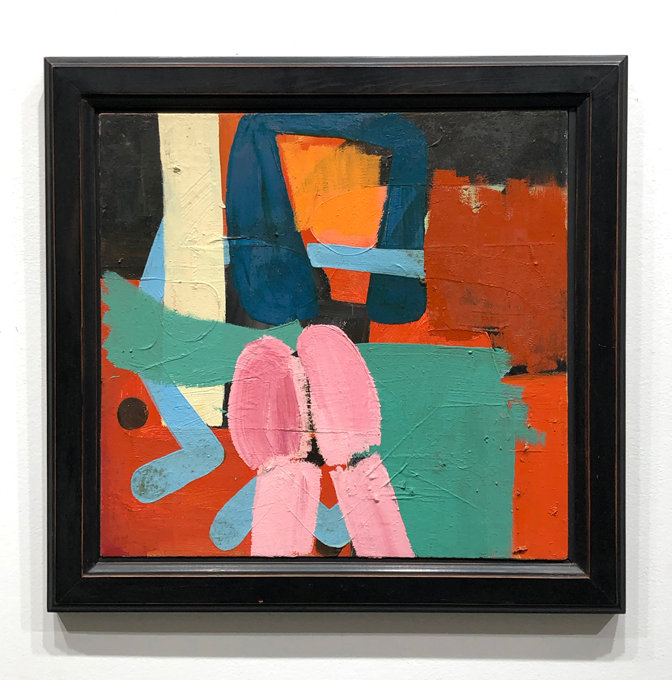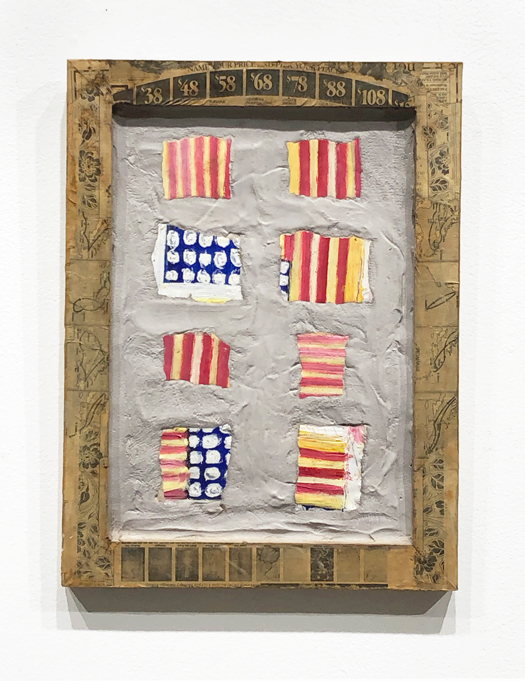
A Lasting Legacy
Inman Gallery exhibition pays tribute to local art collector and patron Bill Lassiter.

Even in this era of legally recognized gay marriage, most of us who are homosexually inclined still decline to procreate. The relative absence of family pressures to produce grandchildren is seen as one of God’s gifts to our people that makes up for the host of other legal and social indignities.
But that doesn’t mean we don’t care about leaving a legacy beyond our friends’ fond memories of the great dinner parties we threw. Although artists, writers, and filmmakers have a shot at leaving a body of memorable works behind, what about the mere mortals who just love art and artists?
I feel that anxiety as a curator and critic (whose impact often ends with the taking down of a show), so I look to Houston’s great arts lover Bill Lassiter as a role model and hero. Just as modernism in New York City was defined through the legacy of the great gay lifelong amateur Lincoln Kirstin, Lassiter spectacularly fulfilled the role of witness and enthusiast for Houston’s late-20th century arts scene.
Lassiter’s life partner was Edward Mayo, registrar for the Museum of Fine Arts, Houston, who died in 2005 after they were together over 40 years. They lived relatively openly as a gay couple in the very early days of visibility, although by personal choice (and with an eye toward “discretion”) they never lived together.

“Pop My Cork,” 1998
Lassiter saw every major development in Houston’s art scene. While his curiosity extended beyond just Houston (as I witnessed when I would casually bump into him at museums and opera performances in Amsterdam and Frankfurt), his first passion was supporting the city’s artists and galleries.
He is frequently referred to as one of Houston’s great arts patrons, despite never being anywhere close to the tax bracket of local patrons whose names are chiseled into the walls of the Museum of Fine Arts. With his passion and keen eye, Lassiter made a greater contribution to the arts here than many of the patrons whose families have buildings named after them. Every museum person in the city revered him, and no museum director, curator, or gallerist would dream of missing his legendary and very bibulous Christmas parties.
For many artists, Lassiter was their first patron who often bought pieces when they were still in grad school at the University of Houston or Rice, or during a residency at the MFAH’s prestigious Core Studio program. As any artist will tell you, the first person who buys a work directly from you is never forgotten. In taking a chance and trusting their own instincts, the independent collector lets the maker know there might be a future for them in art. The artworks we own, the artists we have supported along the way, and the stories of our friendships with art makers are all great (and spectacularly queer) ways to be remembered.

Untitled, 1997
When Lassiter died at 86 in February 2019, the talk around town was about his marvelous art-filled life and his sizable collection that needed to be preserved. The Menil took around twenty works, including a few by the most marketable Houston-associated artists Julian Schnabel and Mark Flood. Those pieces were sold at auction to benefit The Menil. Some of the works that were dear to Lassiter’s late partner were gifted to the MFAH.
That still leaves dozens of pieces from his collection that need to find forever homes. Luckily, Inman Gallery stepped in, as Kerry Inman has represented Lassiter’s close friend and painter David Aylsworth for decades. Later this summer, the two will be presenting a selection of works (including some by Aylsworth) that were dear to Lassiter.
Do not expect large-scale art works, as Lassiter collected on a budget and everything had to fit inside his small Montrose bungalow on Yupon. The art on view has the wispy, heart-to-heart feel of a love note, and it’s clear he preferred intimate works over manufactured bombast. Because he tended to buy from artists’ first shows (when works are usually quite affordable), the pieces can be hard to associate with the artists’ more mature works. Inman herself reminds us that artists have many acts, and their earlier incarnations are necessary stepping stones on the way to finding one’s destiny. (Artist Francesca Fuchs, well-known today as painter’s painter, has a stunning pair of gold-leafed styrofoam cups among her early works.)
Since a museum’s economic realities rarely allow acquisition committees to purchase a collection whole, true art mavens can often acquire the most interesting and quirky material that collectors loved and lived with.
When Aylsworth recently invited me into Lassiter’s legendarily festive bungalow, I found myself asking about some lovely demure abstractions, only to find out they were made by Aylsworth in 1990 during his first years in Houston. In their painterly language and subtle palette, you can see him starting his journey to become one of the greatest abstract painters working in Texas today. The mood of these early abstract paintings is far quieter and more formal than Aylsworth’s bright, abstract homages to Stephen Sondheim. Ayslworth’s life partner and head honcho of The Menil Bookstore, Paul Forsythe, is also represented as an artist, as is gallerist Devin Borden.

Spliced Flag, 1989
Every work of art that is loved enough for someone to display it in their home has a story of passion, connection, and personal relationships attached to it. For those of us who love the things we own, and see our biographies written on the objects that surround us, this upcoming Inman exhibition will be a moving meditation on how Bill Lassiter’s collection embodies a life lived in the service of art.
A collection of Bill Lassiter’s work will be on display at Inman Gallery from August 8 through September 4. For more information, visit inmangallery.com.
This article appears in the August 2020 edition of OutSmart magazine.











FB Comments